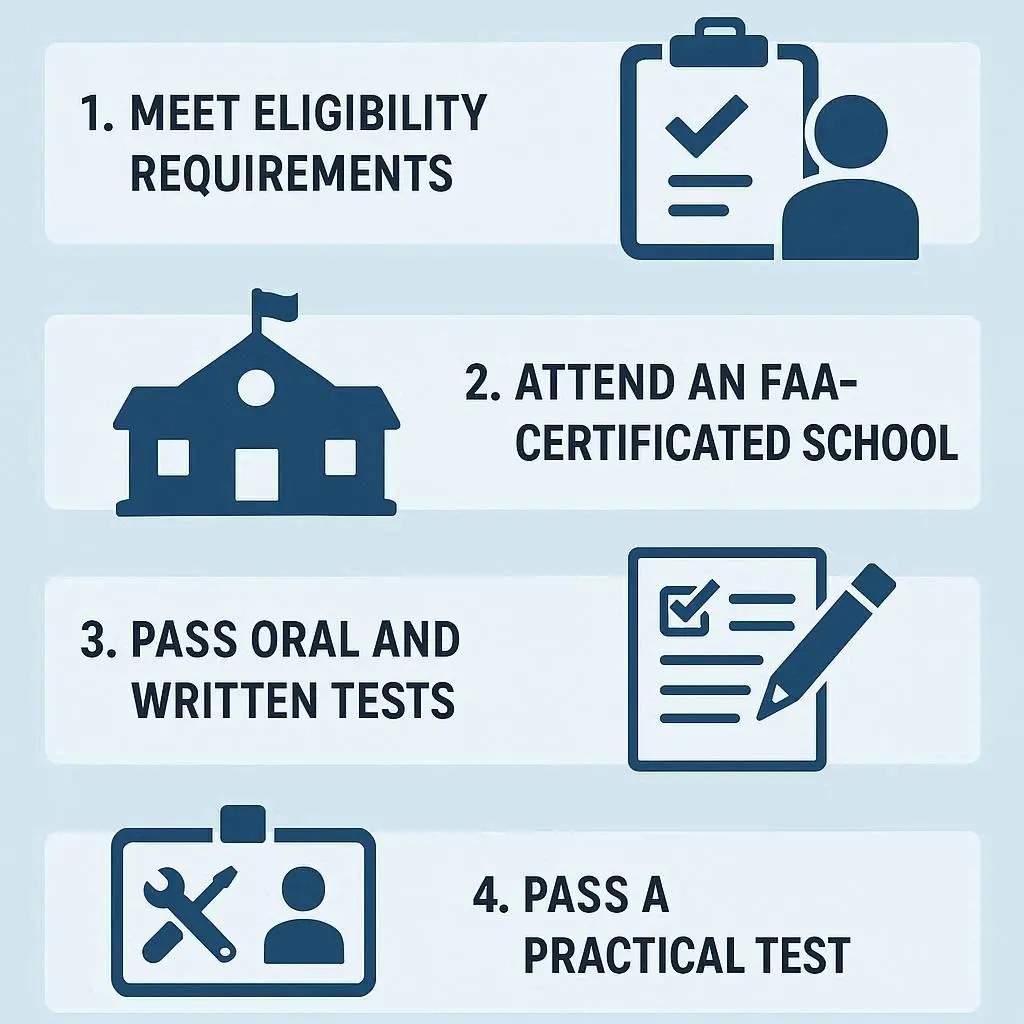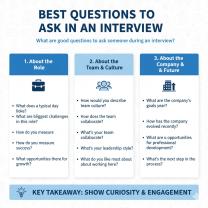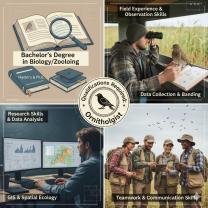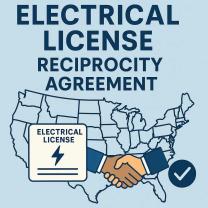How to get licensed as an aircraft mechanic?
How to Get Licensed as an Aircraft Mechanic
Becoming a licensed aircraft mechanic is a rewarding career for anyone passionate about aviation and aircraft maintenance. Also known as Aviation Maintenance Technicians (AMTs), these professionals ensure that airplanes and helicopters operate safely and efficiently.
What is an Aircraft Mechanic License?
An aircraft mechanic license, issued by the Federal Aviation Administration (FAA) in the U.S., certifies that a mechanic is qualified to inspect, repair, and maintain aircraft. The two main license categories are:
Airframe License: Covers the aircraft’s body, structure, and systems.
Powerplant License (P): Covers engines and propulsion systems.
A&P (Airframe and Powerplant) License: Combines both, allowing you to work on complete aircraft systems.
Steps to Get Licensed as an Aircraft Mechanic
1. Meet Basic Eligibility Requirements
Be at least 18 years old.
Read, write, speak, and understand English.
Have the necessary educational or training background.
2. Complete an FAA-Approved Training Program or Gain Experience
You can qualify through either:
Formal Education: Attend an FAA-certified aviation maintenance school (typically 2 years), providing both classroom instruction and hands-on experience.
On-the-Job Training: Work under a certified mechanic for 18–30 months depending on the license type.
3. Pass the FAA Exams
Written Exam: Tests knowledge of aircraft systems, maintenance procedures, and FAA regulations.
Oral and Practical Exams: Conducted by an FAA-designated examiner to evaluate your hands-on skills.
4. Obtain Your License
Once you pass all required exams, the FAA issues your Airframe, Powerplant, or combined A&P certificate, allowing you to work independently on aircraft.
5. Maintain and Upgrade Your Certification
Stay updated with continuing education, regulatory changes, and type-specific certifications if you work on specialized aircraft.
Career Opportunities for Licensed Aircraft Mechanics
With an FAA license, you can work in:
Commercial airlines and aviation companies
Private and corporate aviation
Government and military aviation
Aircraft repair and maintenance facilities
Getting licensed as an aircraft mechanic requires dedication, training, and practical experience. However, it opens the door to a highly skilled, in-demand, and rewarding career in aviation. Whether you aim to work for major airlines, private aviation companies, or government agencies, a mechanic license is the key to unlocking these opportunities.
Becoming a licensed aircraft mechanic, also known as an Aviation Maintenance Technician (AMT), is a rewarding career that involves ensuring the safety and airworthiness of aircraft. This typically requires meeting specific educational, experience, and testing requirements set by the Federal Aviation Administration (FAA).
Here's an overview of how to get licensed, what the training entails, how to maintain your license, and the career opportunities available:
How to Get Licensed as an Aircraft Mechanic
To become a licensed aircraft mechanic, you must meet several criteria set by the FAA, primarily detailed in 14 CFR Part 65, Subpart D. The core requirements include:
Age: Be at least 18 years old.
Language Proficiency: Be able to read, write, speak, and understand the English language.
Experience or Education: Demonstrate either practical experience or completion of an FAA-approved training program.
Pass Tests: Successfully pass comprehensive written (knowledge), oral, and practical examinations within a 24-month period.
The FAA issues an Aviation Mechanic Certificate with specific "ratings," most commonly Airframe (A) and/or Powerplant (P). Mechanics holding both are referred to as "A&P mechanics."
Educational Requirements and Training Programs
There are two primary pathways to meet the experience requirements for an FAA aircraft mechanic license:
FAA-Approved Aviation Maintenance Technician School (AMTS): This is the most common path. These schools (also known as Part 147 schools) offer structured programs designed to prepare students for the FAA certification exams.
Curriculum: AMTS programs cover a broad range of subjects divided into three sections: General, Airframe, and Powerplant. Topics include aviation mathematics and physics, basic electricity, aircraft structures (metallic and non-metallic), fluid lines and fittings, weight and balance, welding, assembly and rigging, reciprocating and turbine engines, propeller systems, and federal regulations.
Duration: Programs typically last from 18 to 24 months for both Airframe and Powerplant ratings.
Hands-on Training: A significant portion of the training is hands-on, working on actual aircraft components and systems.
Prerequisites: Most AMTS programs require a high school diploma or GED and English proficiency.
On-the-Job Training (OJT) / Practical Experience: If you don't attend an AMTS, you can gain experience through supervised OJT.
Experience Duration: You need at least 18 months of practical experience for a single rating (Airframe or Powerplant) or 30 months of concurrent experience for both ratings.
Documentation: All OJT activities must be thoroughly documented, including tasks performed, time spent, and validation by a certificated A&P mechanic. This experience can be gained through military service or civilian work at maintenance facilities.
Steps to Pass Certification Exams
After meeting the experience or education requirements, you must pass three sets of FAA examinations:
Knowledge (Written) Tests:
You must take and pass three separate knowledge tests: General, Airframe, and Powerplant.
The General test must be taken first.
Each test is typically 60 multiple-choice questions, and you need a score of 70% or higher to pass.
These tests cover topics from the FAA's Aviation Mechanic Handbooks.
You'll need an FAA Tracking Number (FTN) and will schedule these tests at an Airman Knowledge Testing Center.
Oral Test:
Once you pass the knowledge tests, you'll schedule an oral examination with a FAA-Designated Mechanic Examiner (DME).
The DME will ask a series of questions across all 43 technical subjects related to your desired ratings (General, Airframe, and Powerplant) to assess your understanding of aircraft maintenance principles, practices, and procedures.
Practical Test:
Immediately following the oral exam, you will undergo a practical (hands-on) test with the DME.
This test requires you to demonstrate your ability to perform various maintenance tasks, troubleshooting, repairs, and inspections to required standards, using proper tools and hardware.
Both the oral and practical exams typically take a full day or more.
If you fail any part of the oral or practical test, you only need to retest on the failed portion, often after a waiting period or additional training.
Maintaining Licenses and Continuing Education
Unlike some other FAA certifications, the FAA does not require specific continuing education hours to maintain an A&P mechanic license. Once you earn the certificate, it does not expire, provided you remain active in aircraft maintenance.
However, the FAA strongly encourages ongoing professional development and recurrent training to ensure mechanics stay current with evolving aviation technology, regulations, and best practices. The FAA's AMT Awards program recognizes mechanics and employers who engage in initial and recurrent training. Many employers also require their mechanics to participate in continuous training programs.
While not mandated for license retention, continuing education is highly beneficial for:
Staying up-to-date with new aircraft models, systems, and materials (e.g., composite materials, advanced avionics).
Enhancing skills in areas like electronics, computer science, and troubleshooting.
Improving career prospects and opportunities for advancement into leadership or specialized roles.
Career Opportunities for Licensed Aircraft Mechanics
A licensed aircraft mechanic has a wide range of career opportunities across various sectors of the aviation industry:
Commercial Airlines: Performing scheduled maintenance, troubleshooting, and repairs on commercial passenger and cargo aircraft. This is a significant employer for A&P mechanics.
Aerospace Manufacturing: Working for aircraft manufacturers (e.g., Boeing, Airbus) in assembly, quality control, or maintenance of newly built aircraft.
General Aviation: Maintaining smaller private planes, corporate jets, and recreational aircraft at local airfields and maintenance facilities.
Military/Government: Working as civilian mechanics for military branches or government agencies (e.g., FAA, NASA) to maintain their fleets.
Repair Stations: Specializing in specific aircraft components or systems (e.g., engines, avionics, propellers) at certified repair stations.
Helicopter Maintenance: Specializing in the unique maintenance requirements of helicopters used for transport, emergency services, or corporate travel.
Avionics Technician: While there isn't a separate FAA avionics certification, A&P mechanics can specialize in maintaining and repairing aircraft electronic systems, including navigation, communication, and radar equipment.
Management and Supervision: With experience, mechanics can advance to supervisory roles, overseeing maintenance teams or managing maintenance operations.
Aircraft Restoration/Renovation: Working on the preservation, repair, and modification of older or historical aircraft.
The demand for skilled aircraft mechanics remains strong, driven by the growth of air travel and the increasing complexity of modern aircraft.












